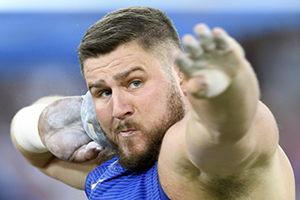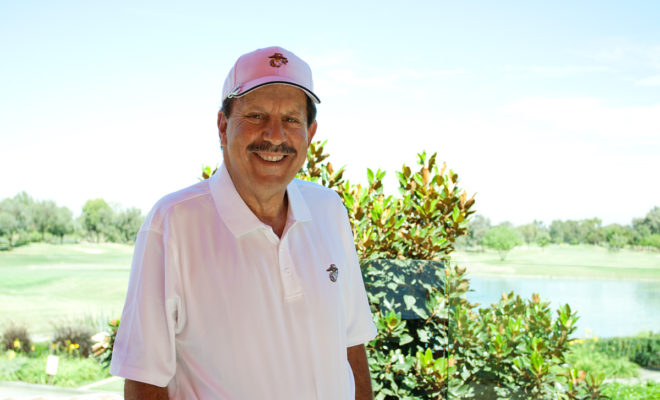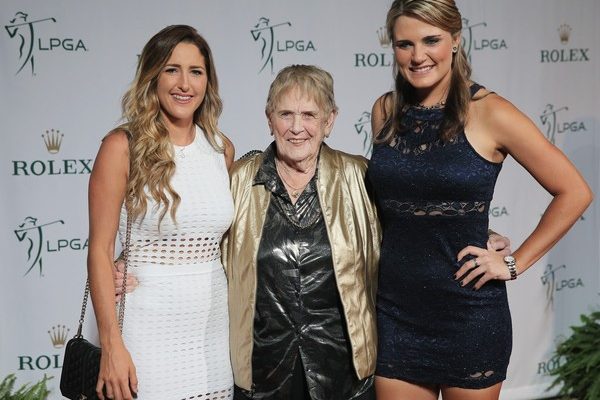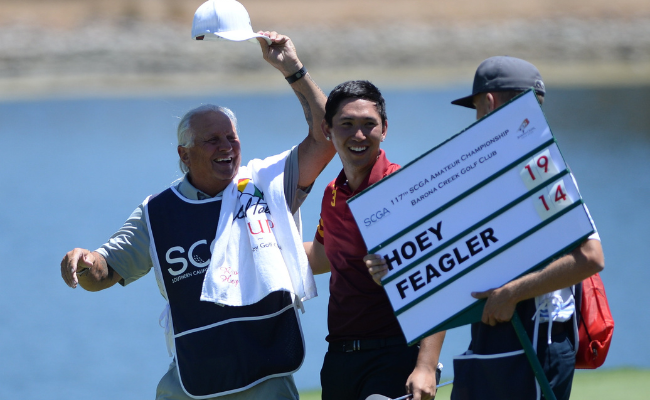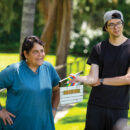APGA RISING

Mini-tour giving minority players a ladder professional golf
Four miles southeast of SoFi Stadium in South Los Angeles, at 1818 Charlie Sifford Drive, is the golf facility that has meant more to Black golfers over the last century than any in the Southland.
For decades, the Chester L. Washington Golf Course, opened in 1928 as the Western Avenue Public Course, was a haven for African Americans when they were barred from playing nearly everywhere else. And in the 1960s, “Chester” — named for a local Black newspaper publisher — was the flashpoint for Civil Rights activists who eventually won access for all golfers to all of the courses run by Los Angeles County.
By then, some of the greatest Black golfers had made Chester their regular playground, including Sifford, Bill Spiller, Lee Elder and Teddy Rhodes. Earl Woods eventually brought his son Tiger over for an education.
The history at Chester Washington was not lost on Ken Bentley, a Los Angeles native and retired Nestlé executive, when he led the formation in 2010 of the Advocates Professional Golf Association (APGA) to provide more opportunities for minorities in professional golf. Bentley himself had broken a sports color barrier in 1969, becoming the first Black varsity tennis player at the University of California, Santa Barbara.
The APGA’s first-ever event was played at another public course, Rogers Park in Tampa, Fla., but Bentley made sure one of three tournaments that year was staged at Chester.
Fifteen years later, the APGA’s stature in pro golf has risen considerably — it has the highest profile of any of the country’s so-called “mini-tours” — and the venues on its 18-event schedule in 2025 include Torrey Pines, TPC Sawgrass, Spyglass Hill and Concession. Fittingly, the one holdover from those early years: Chester Washington.
PURSUING THE DREAM
When Floridian Kamaiu Johnson, an APGA standout who has made five starts on the PGA Tour, captured the Juneteenth Classic at Chester early in the summer, he was mindful to note, “I couldn’t have done this without guys like Charlie Sifford, Tiger Woods, Lee Elder and Jim Thorpe. I wouldn’t be where I’m at without the APGA Tour. I appreciate them giving us a platform to play golf.”
Current APGA player and Compton native Aaron Grimes, 31, had a unique connection to the APGA before he joined the tour. A high school standout at St. John Bosco, where he played against the likes of Patrick Cantlay and Beau Hossler, Grimes was invited to participate as a teen in the first APGA event at Chester. He didn’t recognize a single name on the tour and figured he could handle them all.
“I got beat pretty good,” Grimes said with a laugh.
The upside? “It allowed me to think I could play professional golf,” he said, “and just because of that thought alone I pursued it.”
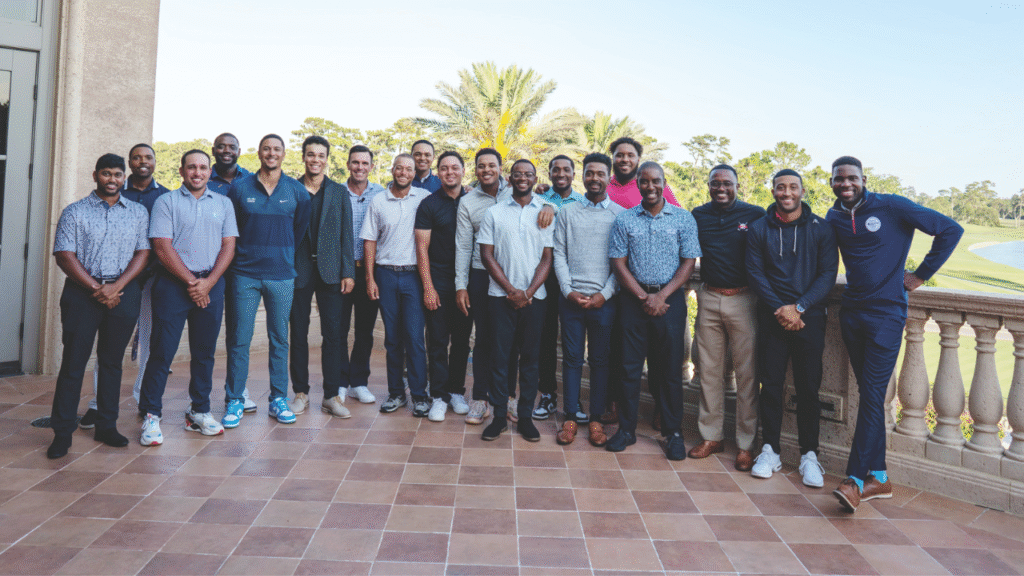
The APGA has largely fulfilled its promise of getting its tour players to at least have a taste of the top level of professional golf. Through relationships with sponsors and the PGA Tour, numerous players have earned sponsor invites into events in San Diego, Bermuda and Mexico as a result of qualifying with APGA victories tied to those tournaments.
The PGA Tour offered its TPC facilities for tournaments, and popular tour player Billy Horschel has given his time and money to support an invitational that bears his name. One of Bentley’s biggest wins was getting a full buy-in from Cisco, which supports the APGA with sizeable dollars to fund the season-long series. World Wide Technology and Farmers Insurance have also been enthusiastic supporters.
Last winter, the APGA had 28 players compete at some level of Qualifying School, and one of the tour’s biggest initiatives is to ensure the top-10 finishers in its Cisco Cup points list don’t have to pay for the qualifying series.
NEXT LEVEL
Marcus Byrd, 28, a Washington, D.C. native who earned a Korn Ferry Tour card in 2024 and has three top-10 finishes this year on PGA Tour Latinoamérica, dominated the 2025 Cisco race while notching two wins. He pulled off a nice double in July by making the cut in the PGA Tour’s ISCO Championship and followed that days later with a victory in the APGA’s event at TPC Deere Run — Byrd’s eighth win on the tour.
Thanks to the APGA’s growth, Byrd’s success has brought him more than trophies. The tour’s annual purse total has more than tripled over the last six years to $1.3 million in 2025. Byrd had earned $149,875 by late August, with five events remaining on the APGA schedule, as well as $25,000 for the Player of the Year award.
How does that compare to other developmental tours? Extremely well. The top player on PGA Tour Latinoamérica through August stood at $104,371; the leader on the Florida Pro Tour had earned $11,488.
Bentley would always like to offer bigger prize money but remains more concerned about providing the tools for players to get to the next level, while also inspiring younger generations to see golf as a stepping stone in life.
“I think we’re getting closer because guys are getting better,” Bentley said. “But we still need that breakout moment, and that’s what keeps me up at night — trying to figure out how we do that.”
Having said that, Bentley added, “I think at times we focus too much on getting guys to the PGA Tour and lose sight of kids following the APGA and these guys being their heroes.”

SoCal kids have another one of their own to look up to now. Jonathan Yoshihiro, a 30-year-old from Yorba Linda who didn’t play college golf, has worked diligently to improve in recent years, and after playing on a handful of mini tours, he joined the APGA this season.
Bentley would always like to offer bigger prize money but remains more concerned about providing the tools for players to get to the next level, while also inspiring younger generations to see golf as a stepping stone in life.
In August, Yoshihiro won the biggest tournament and check of his life, shooting 4-under-par over the last four holes to capture the Mastercard Tour Championship at Bally’s Golf Links at Ferry Point in New York. The prize was the biggest of the year on the APGA: $55,000.
Not bad for a guy who had not won anything more than an 18-hole tournament since he turned pro.
Yoshihiro, who worked in the cart barn for a time at Black Gold GC in Orange County to cover his golf costs, has been sold on the APGA’s quality of courses and competition.
“Everything is set up to get you to the next level,” he said.
Considering the APGA’s trajectory, Yoshihiro made the right call to get on board.
“Timing,” he said, “is everything, of course.”

